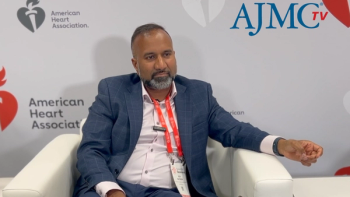
Sex Differences in Fat Deposits Linked to Accelerated Biological Aging
Key Takeaways
- Adiposity phenotypes, including VAT and muscle adipose tissue infiltration, are linked to adverse cardiovascular aging in both sexes.
- Men exhibit higher VAT and android fat, while women have more subcutaneous and gynoid fat, affecting cardiovascular age-delta differently.
Male and female fat deposit distribution was associated with an increased cardiovascular age-delta; however, some adiposity phenotypes seen as beneficial in one sex were a risk in the other.
Adverse cardiovascular aging was found to be associated with an increased prevalence of adiposity phenotypes in both men and women, according to a recent study uncovered and published in the
About 43% of adults, equally affecting both men and women, experience overweight. Individuals with a similar body mass index (BMI) have distinct metabolic and cardiovascular disease risks, leading researchers to believe susceptibility to obesity-related cardiovascular complications may not solely be due to BMI—as a measure of overall body mass—but variation in fat distribution. Prior evidence has also shown that sex hormones can influence and modify fat deposit regulations, making men more likely to have visceral adipose tissue (VAT)—fat stored in the abdominal cavity surrounding vital organs—whereas women are more likely to have additional fat depots in their lower bodies.1 When it comes to assessing cardiovascular aging, little is known about the role sex-specific drivers play. Yet, researchers believe that obesity-related risk may be a key modifier in risk analysis.
The study used data from the UK Biobank, which comprises data from nearly 500,000 participants aged 40 to 69 years who were recruited between 2006 and 2010. Cardiovascular age-delta was calculated as the difference between predicted age and chronological age using a pre-trained machine learning model that was shown 126 image-derived traits of vascular function, cardiac motion, and myocardial fibrosis. The analysis included 21,241 participants.
Sex-Dependent Associations
Women had more abdominal subcutaneous fat (fat layer under the skin), muscle adipose tissue infiltration (intramuscular fat), and gynoid fat (subcutaneous fat around the hips and thighs). Muscle adipose tissue infiltration increased by an average of 11.7% per decade in females, but only 9.8% in males. However, men had greater volumes of VAT, android fat (upper-body visceral and subcutaneous), and whole-body mass fat. VAT increased more in men, averaging an 8.2% increase per decade compared with 5.3% in females, while subcutaneous fat decreased by 5.4% in females and 4.3% in males per decade.
The adiposity phenotypes associated with adverse cardiovascular age-delta events for both sexes included VAT, muscle adipose tissue infiltration, liver fat fraction, and total abdominal adipose tissue. While these 4 fat deposits were associated with increased biological age, in males, android fat and gynoid fat were linked to increased delta-age. In females, however, gynoid fat was associated with beneficial changes in cardiovascular age-delta in premenopausal women, but not in postmenopausal women. Although BMI was a significant indicator of increased age-delta, it was a weak predictor of age-delta when compared with body fat. A diabetes diagnosis was also found to increase age-delta, showing and worsening the adverse relationship between fat phenotypes and age-delta.
Furthermore, total cholesterol and direct low-density lipoprotein cholesterol were also found to increase cardiovascular age-delta, while high-density lipoprotein cholesterol was associated with a lower cardiovascular age-delta. Overall, VAT had the strongest positive association with cardiovascular age-delta in males, but abdominal subcutaneous adipose tissue affected males and females differently. Researchers also noted that VAT promotes the abnormal secretion of adipose-derived inflammatory cytokines and bioactive peptides, both thought to drive premature brain aging.2
“Our observation that visceral fat promotes aging of the heart and circulation in humans provides support for the potential role of emerging treatments that target adipose tissue function to extend health span,” the study authors wrote.
As a result, scientists suggested glucagon-like peptide 1 (GLP-1) receptor agonists, which substantially reduce VAT and liver fat for those without diabetes. Recent studies have also shown that GLP-1s reduced the odds of major adverse cardiac events. Their use has expanded beyond solely treating obesity or type 2 diabetes, with research into their use to treat a plethora of other conditions like kidney disease, heart failure with preserved ejection fraction, and metabolic-associated liver disease—many of which may affect cardiovascular disease.3
The study limitations included participant demographics, as older-age-group people and those living in socioeconomically deprived areas are underrepresented in the UK Biobank. The population is also primarily European, requiring more work to assess how these results may differ in people of diverse ancestries and social groups. Adiposity phenotypes were only assessed at a single point in the study, and researchers were also not able to externally validate their findings, as there is no other biobank study with equivalent phenotypic data.
“In conclusion, sex-dependent fat phenotypes are related to biological cardiovascular aging in a predominantly middle-aged white population, which highlights adipose tissue distribution and function as potential targets for interventions to extend healthy lifespan and to support public health strategies,” the study authors concluded.
References
1. Losev V, Lu C, Tahasildar S, et al. Sex-specific body fat distribution predicts cardiovascular ageing. Eur Heart J. Published online August 22, 2025. doi:10.1093/eurheartj/ehaf553
2. Ishii M, Iadecola C. Adipocyte-derived factors in age-related dementia and their contribution to vascular and Alzheimer pathology. Biochim Biophys Acta. 2016;1862:966-74. doi:10.1016/j.bbadis.2015.10.029
3. Bonavitacola J. Experts encourage use of GLP-1s in cardiovascular care. AJMC®. August 3, 2025. Accessed August 25, 2025.
Newsletter
Stay ahead of policy, cost, and value—subscribe to AJMC for expert insights at the intersection of clinical care and health economics.





























































